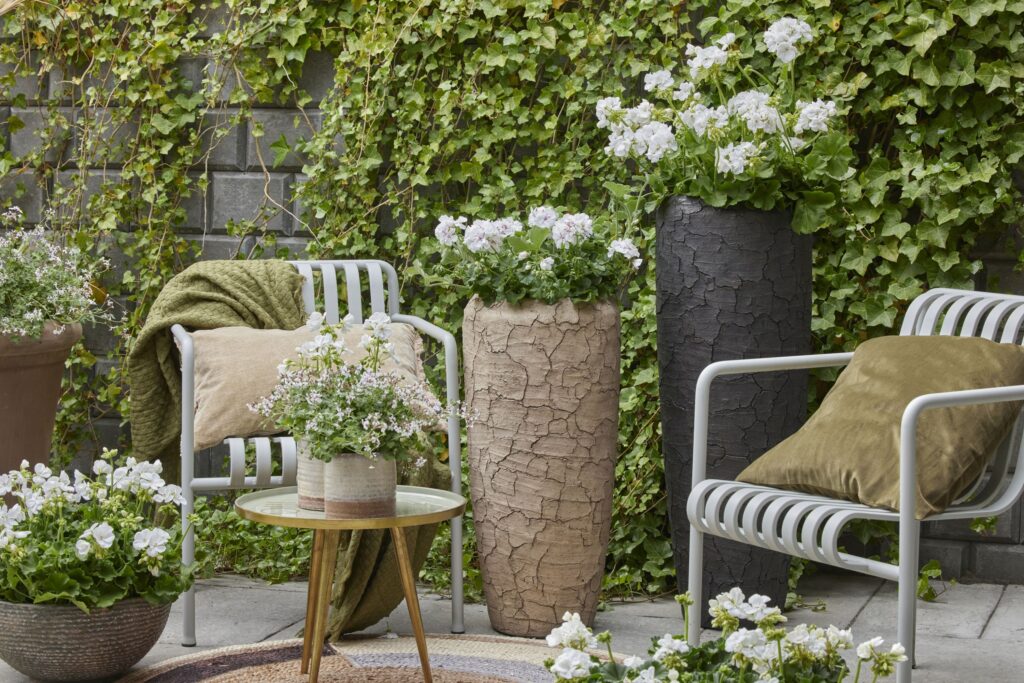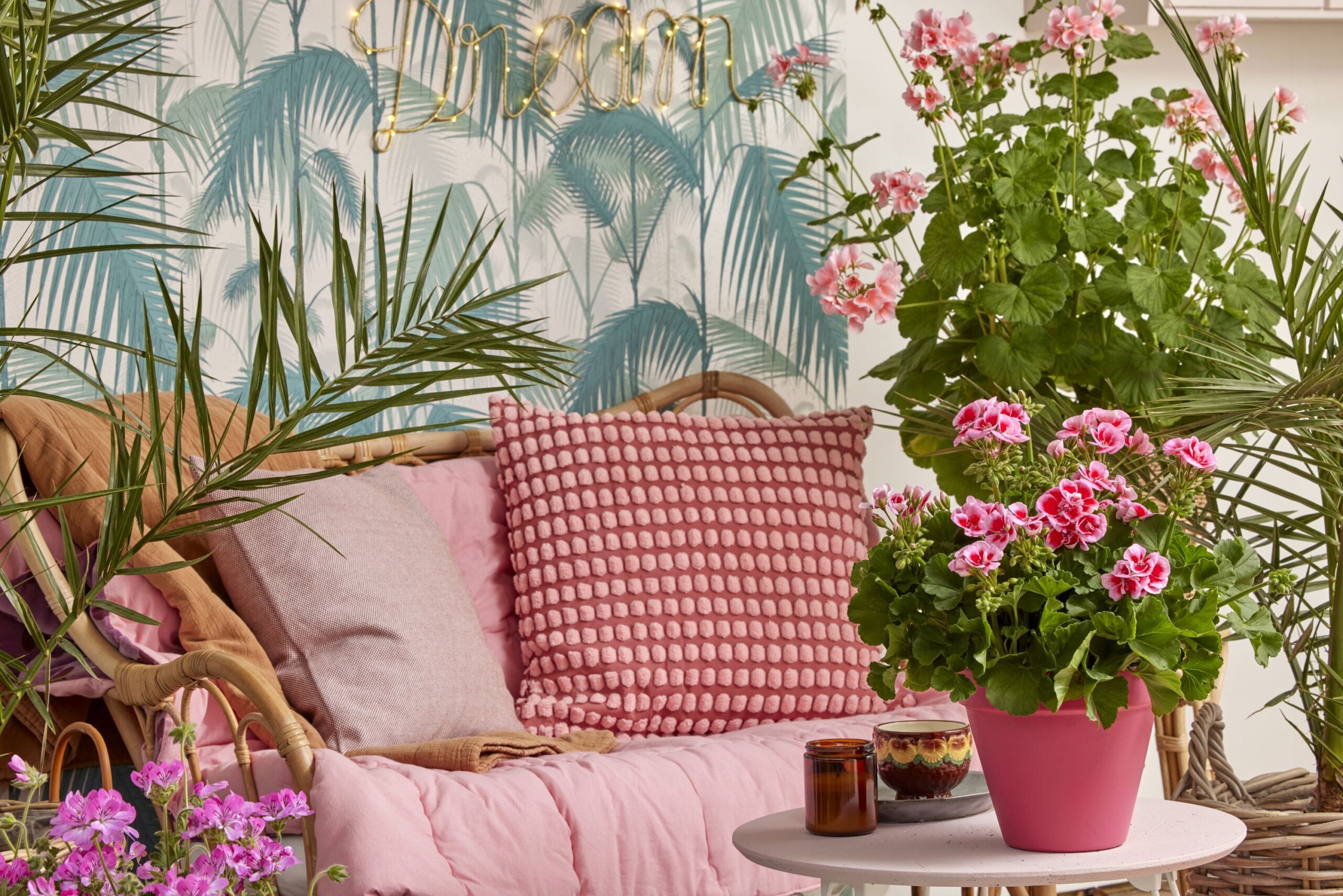Here in Britain we have a lot of weather and when it rains for solid months at a time it concentrates the mind of gardeners and horticulturalists on supporting sun-loving plants with ideal growing conditions.
Geraniums are the quintessential flowering plant, which ‘scream their joy’ when the sun is shining and beautify homes, gardens, patios, greenhouses, conservatories, balconies, porches, sun decks and summerhouses all throughout the traditional al fresco season. But when al fresco really means running for cover when the heaven’s open, you don’t have to retreat fully indoors, but can rely instead on a well kitted out halfway house which is kitted out and decorated for semi-outdoor entertaining, afternoon tea or working from home.
With their great big windows and light, airy space, greenhouses, conservatories and summerhouses can give you that delightful feeling of being in the middle of the garden when the weather doesn’t cooperate in summer or it’s too cold in spring or autumn to park yourself fully outside. With the right furniture, accessories and plants, transitional spaces between indoors and outdoors can become cosy retreats, which are as free from biting insects as they are from chilly breezes and showers of rain.
Light and warmth-loving plants such as geraniums are perfect for the special growing conditions created under glass, helping to create a real feel-good atmosphere with their lush growth and varied abundance of colourful flowers.

Enchanted glass houses
Lush vegetation will transform a glasshouse and the surrounding garden into a magical paradise – a dream for any plant lover. Easy-care geraniums take centre stage in this flowering retreat. Placed in pots and containers, these summer stunners wow with their abundance of flowers from spring through to autumn. Selected vintage furniture and accessories enhance the cosy feel.
For a bit of upcycled cottagecore chic, scented geraniums in vintage watering cans or other upcycled containers make a cost effective but charming accessory. While trailing and upright geraniums are primarily popular for their decorative flowers, scented geraniums appeal above all for their delicious aromas and distinctive leaf shapes. Their leaves contain essential oils that can be used to flavour food and drinks, for example. Lemon scented geraniums can also be used to keep mosquitoes and other pests at bay.
Flower-filled living spaces with an outdoor feel
Light-flooded summerhouses and conservatories are a wonderful extension to your living space. In this interior with an exotic outdoor feel, colourful geraniums in pots and baskets give off positive vibes, while indoor palms, jungle wallpaper and boho-style furnishings create a relaxed atmosphere.
Geraniums are often treated as summer annuals, but with the right care, they can survive for many years. Unheated conservatories or summerhouses with plenty of daylight are ideal for overwintering these tender plants. Geraniums should be brought indoors before the first night frost and cut back to around 15cm. During the dormant period, they don’t need any fertiliser and hardly any water. In spring, repot them in fresh soil. As temperatures rise, the plants will begin to sprout again. Heated conservatories, greenhouses and bright summerhouses provide perfect growing conditions all year round, allowing geraniums to reach remarkable sizes.
Provide cool air on hot summer days!
With a greenhouse or conservatory, you can benefit from a significantly longer geranium season. The hothouse effect provides ideal growing conditions when it’s still too cold or no longer warm enough outside for these cold-sensitive South African native plants. In summer, however, glazed rooms can become very hot. This can even become a problem for the heat-tolerant geranium. At the height of summer, good ventilation ensures the indoor temperature in a conservatory or greenhouse is only slightly higher than the temperature outside so geraniums and other plants don’t suffer. Important: Make sure they have enough water when it’s very hot. Reservoir window boxes and automatic irrigation systems considerably reduce the amount of watering required.
By Dr Susanne Lux of Pelargonium for Europe

